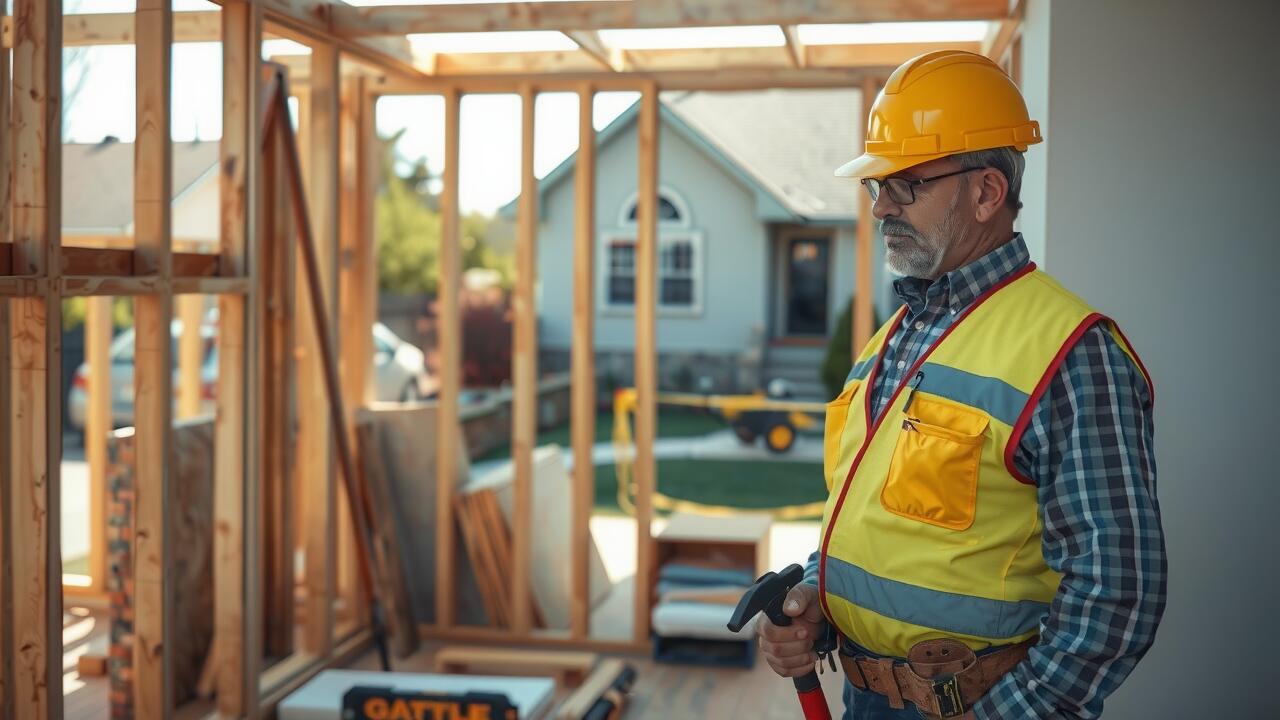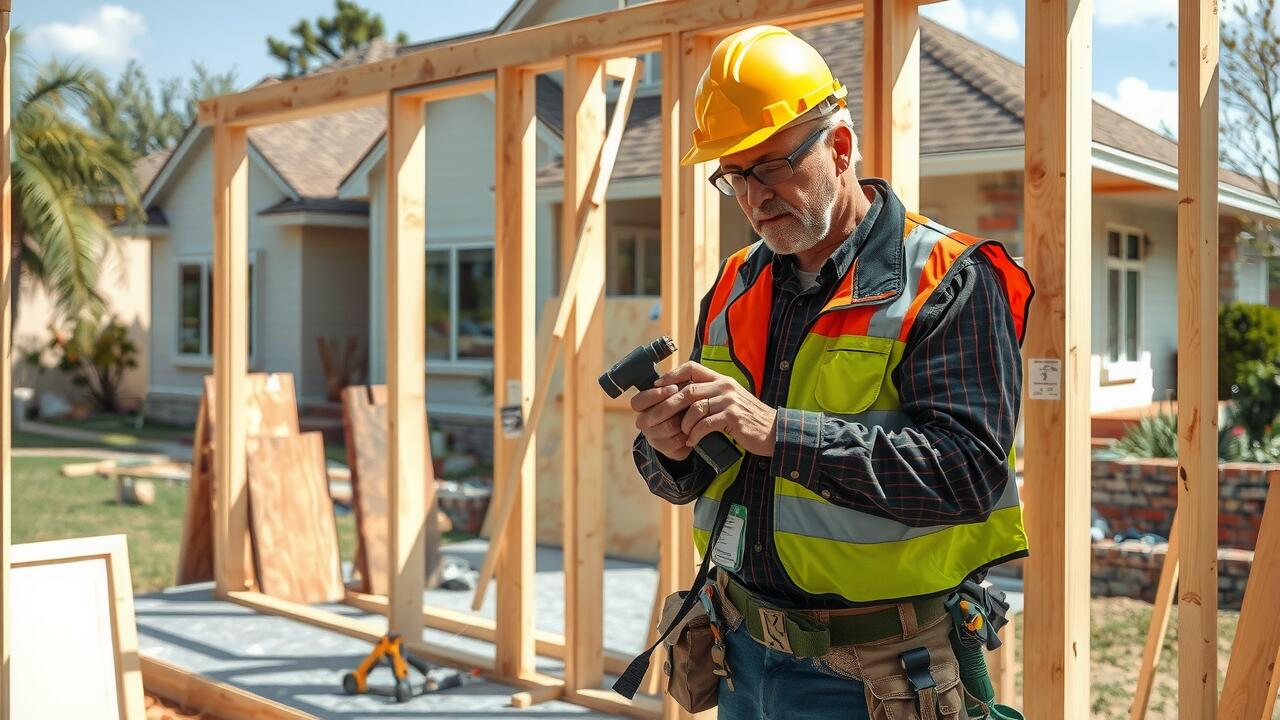
Table Of Contents
Hiring Professionals for Your Room Addition
When considering room additions in Saugus, Santa Clarita, hiring professionals can significantly streamline the process. Experienced contractors bring a wealth of knowledge about local regulations and building codes, ensuring that your project aligns with all necessary requirements. Their expertise allows for efficient planning and execution, minimizing the risk of costly delays and potential design flaws. A quality contractor also manages a team of skilled workers who are well-versed in various construction techniques, enhancing the overall quality of workmanship.
Working with licensed professionals also provides peace of mind. They typically carry insurance and bonding, protecting you from liabilities associated with accidents or damages during the construction process. Beyond compliance and safety, established contractors often have a network of reliable subcontractors and suppliers. This can lead to better pricing on materials and services, ultimately helping you stay within budget while achieving a seamless room addition that complements your home.
Benefits of Working with a Licensed Contractor
Working with a licensed contractor can greatly simplify the process of planning and executing room additions in Newhall, Santa Clarita. These professionals possess the necessary expertise and experience to navigate local building codes and regulations effectively. Their knowledge ensures that projects adhere to legal standards, minimizing the risk of costly mistakes that could arise from DIY attempts or unlicensed work.
In addition to compliance with regulations, licensed contractors often have established relationships with local officials and inspectors. This network can facilitate smoother communication and expedite the permitting process, which is crucial for room additions in Newhall, Santa Clarita. Furthermore, licensed contractors typically offer warranties on their work, providing homeowners with peace of mind about the durability and quality of their investment.
Costs Associated with Permitting
The costs associated with permitting for room additions in Santa Clarita can vary significantly based on several factors. The size and scope of your project typically dictate the fees you’ll encounter. Additional factors such as the specific permits required, the complexity of the site, and any potential environmental assessments may also influence the overall cost. Understanding these expenses upfront will help you better integrate them into your overall project budget.
In addition to standard permit fees, there may be other costs to consider. These can include inspection fees, plan review fees, and potential impact fees related to infrastructure. If your project requires special considerations due to zoning or neighborhood regulations, it’s wise to account for these additional expenses as well. Comprehensive financial planning can ensure that your room additions in Santa Clarita proceed smoothly without unexpected financial strains.
Budgeting for Permits and Additional Fees
When planning for room additions in Humphreys, Santa Clarita, budgeting for permits and additional fees is essential. This process often involves not only the cost of obtaining the necessary permits but also various fees related to inspections and potential modifications to your plans. Local regulations may require you to secure multiple permits based on the scope of your project, which can add to the overall expenses. It is wise to familiarize yourself with the specific requirements for your area, as this can help you create a more accurate financial plan.
In addition to the basic permit costs, other expenses may arise throughout the permitting process. These could include impact fees, administrative fees, and associated costs if you need revisions to comply with local codes. Unforeseen expenses might also occur, especially if additional permits are required as the project develops. Properly estimating these fees ensures that your budget can accommodate the necessary permits without causing delays or disruptions to your construction timeline.
Understanding Zoning Requirements
Zoning requirements play a crucial role in shaping the scope and feasibility of your planned construction project. In Santa Clarita, these regulations dictate how land can be used within different areas. Factors such as the designated zoning district can determine the size, height, and even the architectural style of room additions in Saugus, Santa Clarita. Understanding these criteria is essential before commencing any work, as noncompliance can lead to costly delays or the need to alter your plans significantly.
Before applying for permits, familiarize yourself with the specific zoning restrictions applicable to your property. The City of Santa Clarita typically categorizes zones to manage land use effectively. Each zone could have distinct limitations on dimensions and placement of structures. If your proposed room addition does not align with these zoning specifications, you may face challenges or rejections during the permitting process. Therefore, thorough research into zoning regulations is imperative to ensure a smooth permitting journey.
How Zoning Affects Your Room Addition
Zoning regulations play a crucial role in the approval process for any construction projects, including room additions in Humphreys, Santa Clarita. Local zoning laws dictate how properties can be used, the types of structures allowed, and their height and size restrictions. These regulations aim to maintain the character of neighborhoods while ensuring that new constructions align with community standards. Before embarking on your room addition project, it’s important to consult these requirements to avoid disruptions or delays in the permitting process.
Every property in an area may have specific zoning classifications that influence permissible activities and development. For room additions in Humphreys, Santa Clarita, you may find restrictions related to setback lines, which dictate how far back a structure must be from the property line. Understanding these guidelines will not only help streamline your project but also ensure that your addition complements the existing landscape and adheres to the town’s planning protocols.
FAQS
What is the first step in the permitting process for a room addition in Santa Clarita?
The first step is to consult with a licensed contractor who can help you understand the local regulations and prepare the necessary documentation for your permit application.
How long does it typically take to obtain a permit for a room addition in Santa Clarita?
The timeline can vary, but it generally takes between 4 to 8 weeks to process a permit, depending on the complexity of the project and the current workload of the permitting office.
Are there specific zoning requirements I need to consider before planning a room addition?
Yes, zoning requirements can dictate the size, placement, and type of addition allowed on your property. It’s important to check with the city’s planning department to ensure compliance.
What costs should I expect when budgeting for permits for a room addition?
Besides the permit fees, you should also budget for potential costs such as plan checks, inspections, and any additional fees that may arise from zoning variances or special assessments.
Can I handle the permitting process myself, or should I hire a professional?
While you can handle the process yourself, hiring a licensed contractor is highly recommended. They have the expertise to navigate the regulations and can help ensure that all aspects of your project comply with local building codes.


